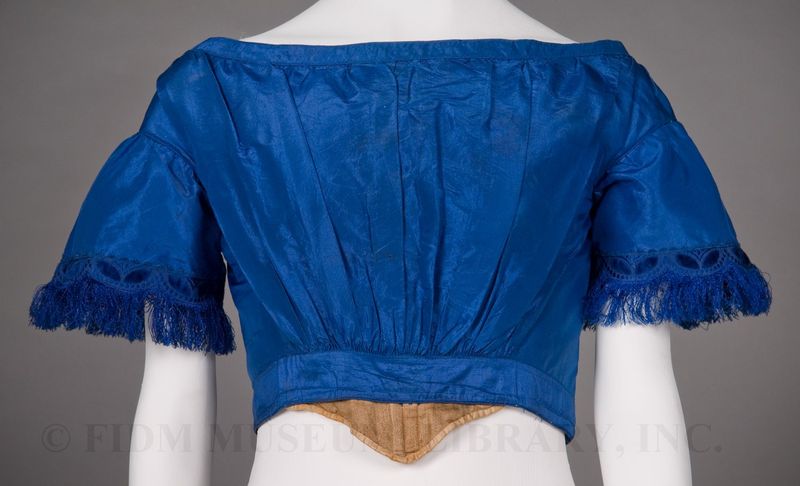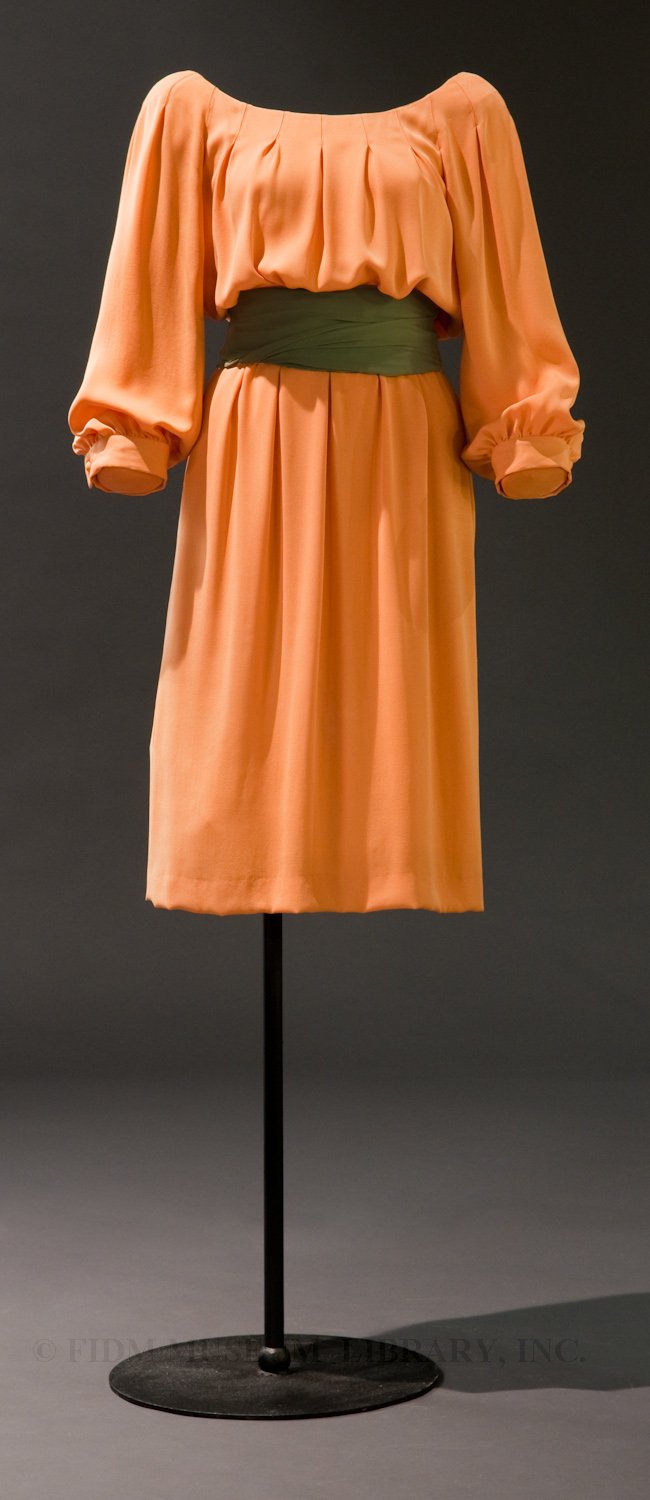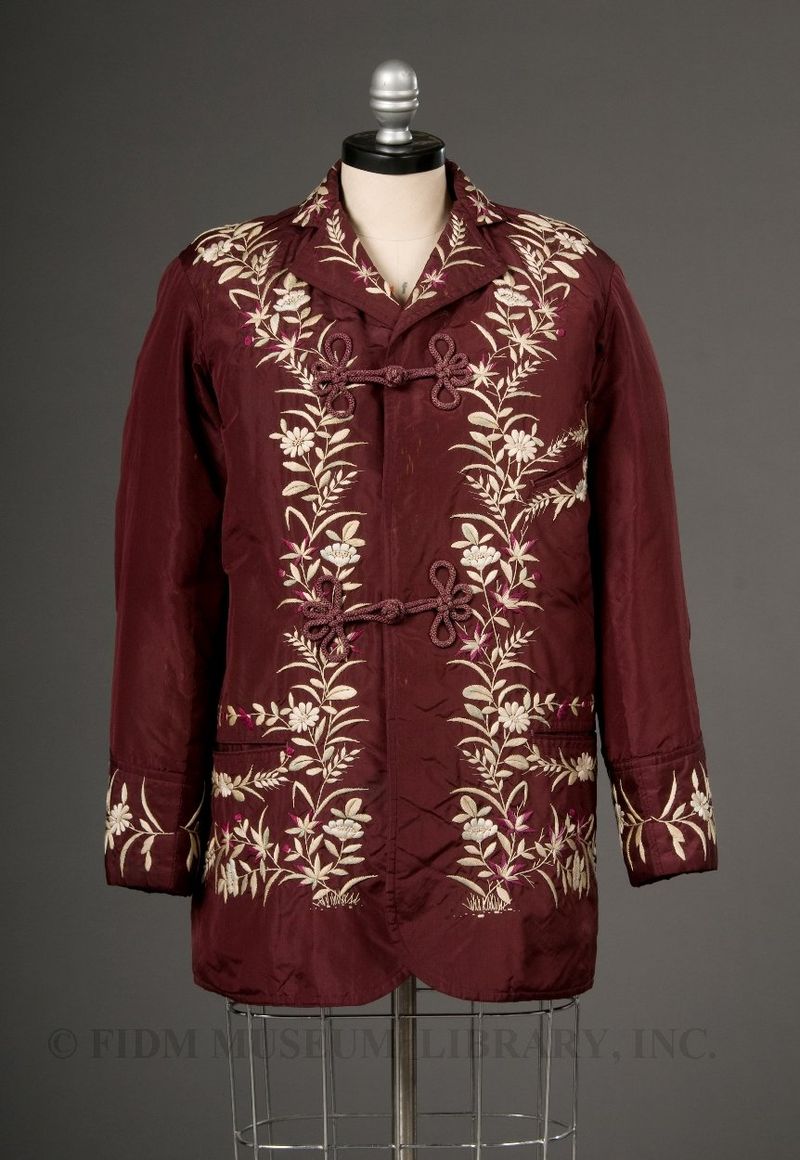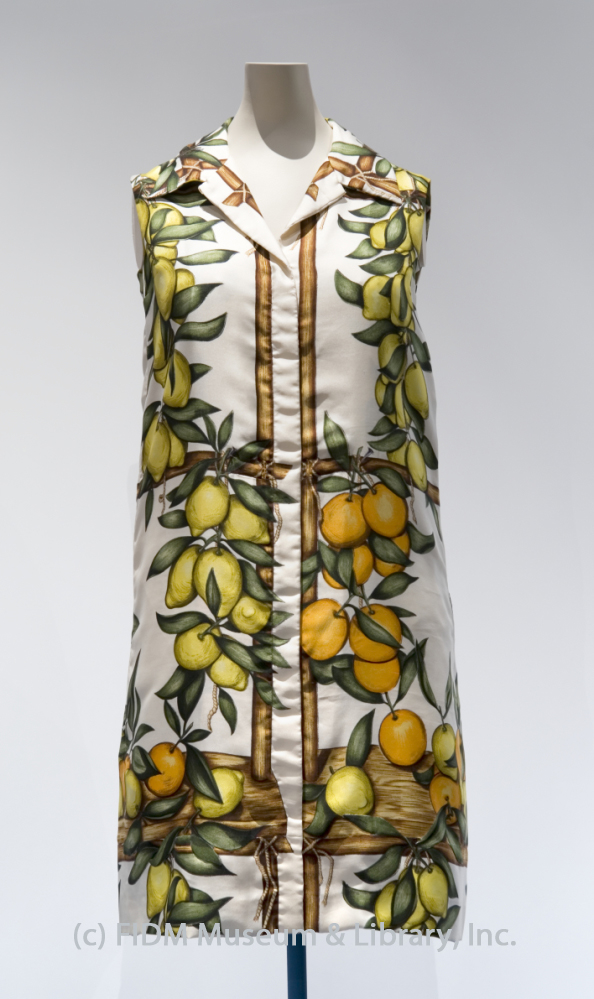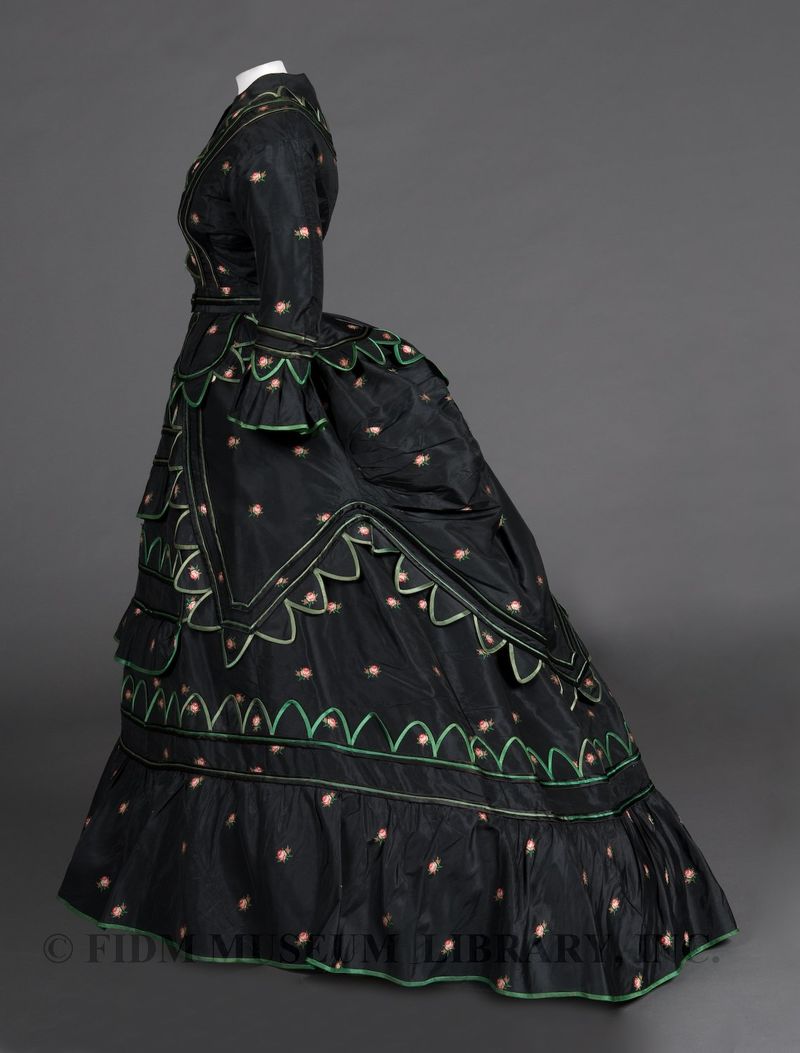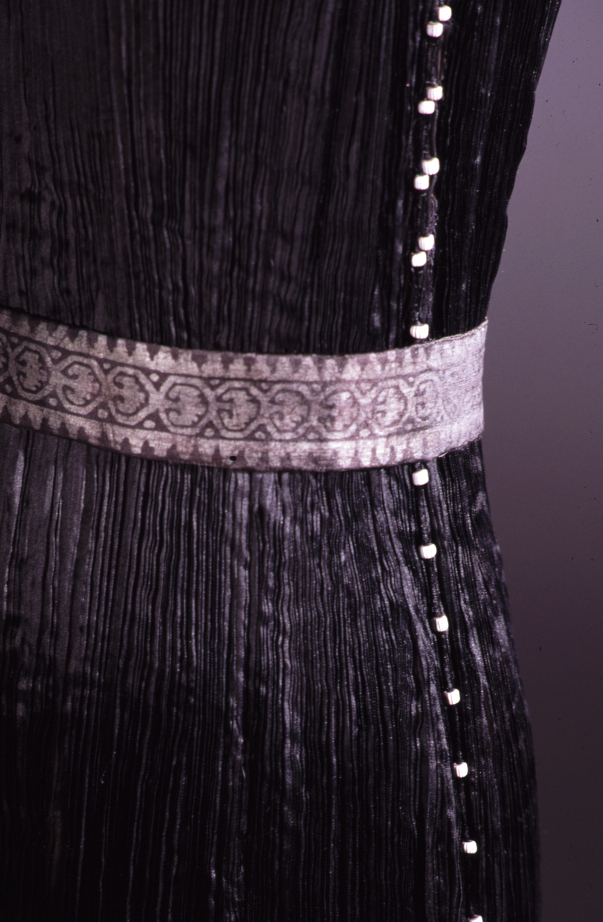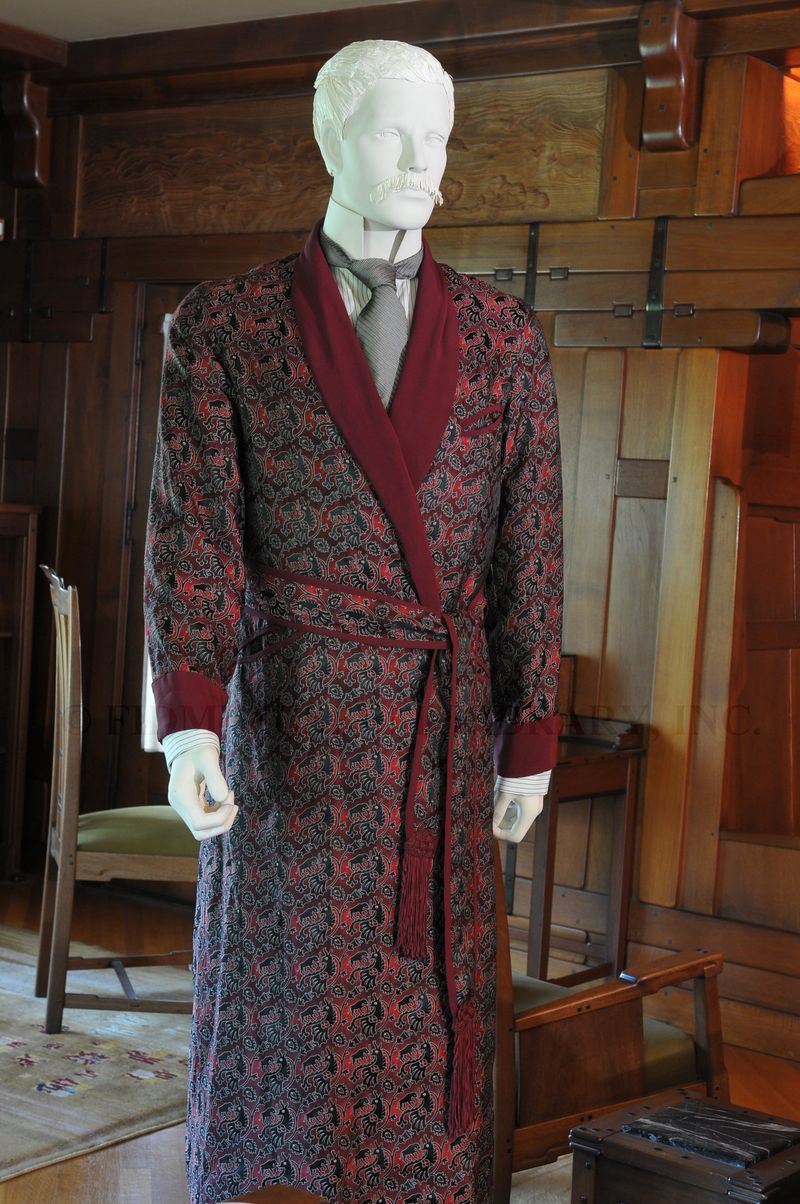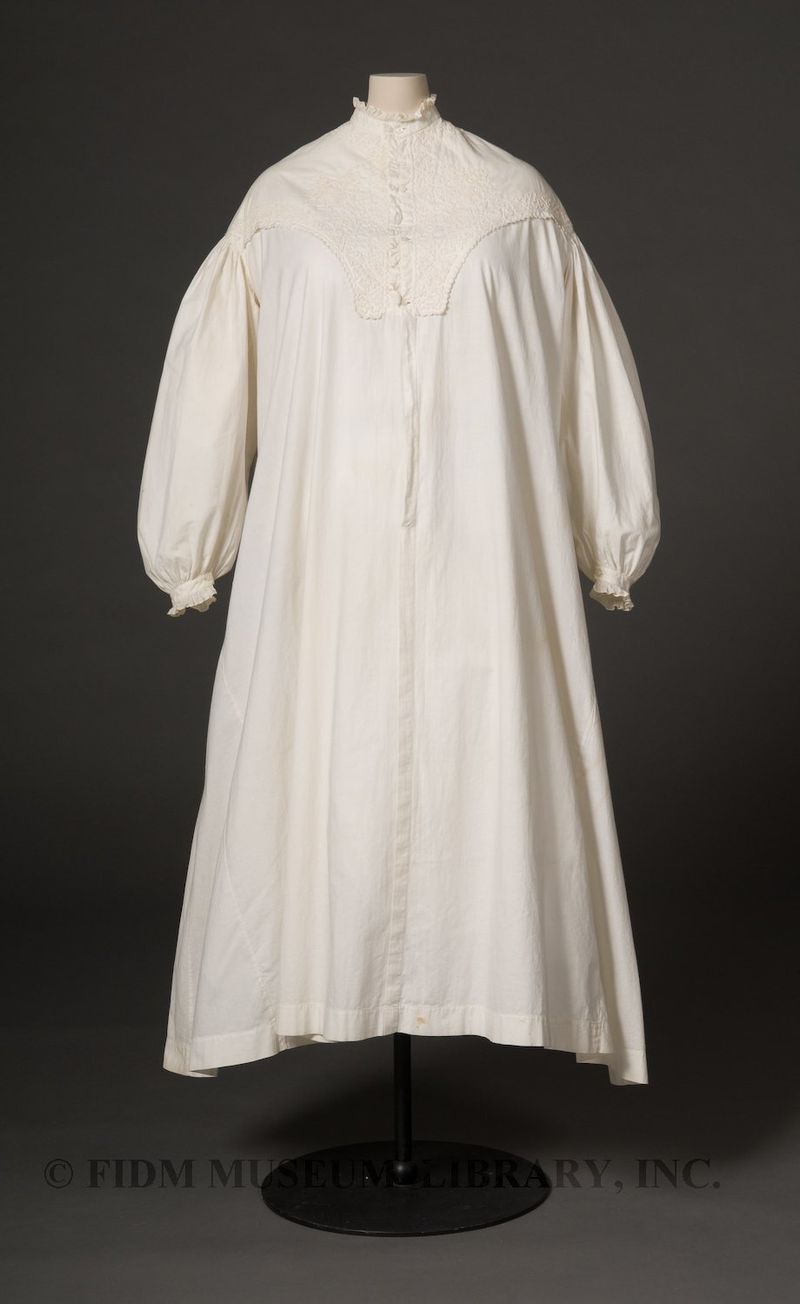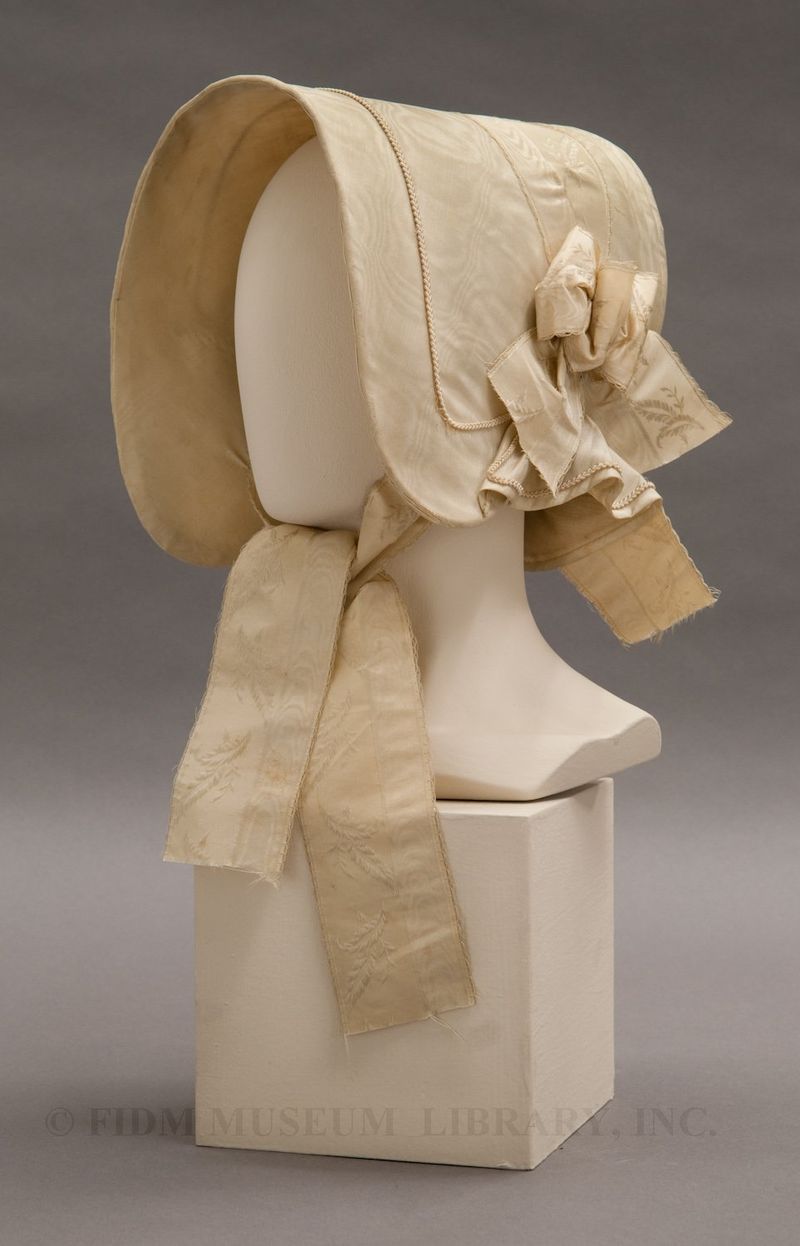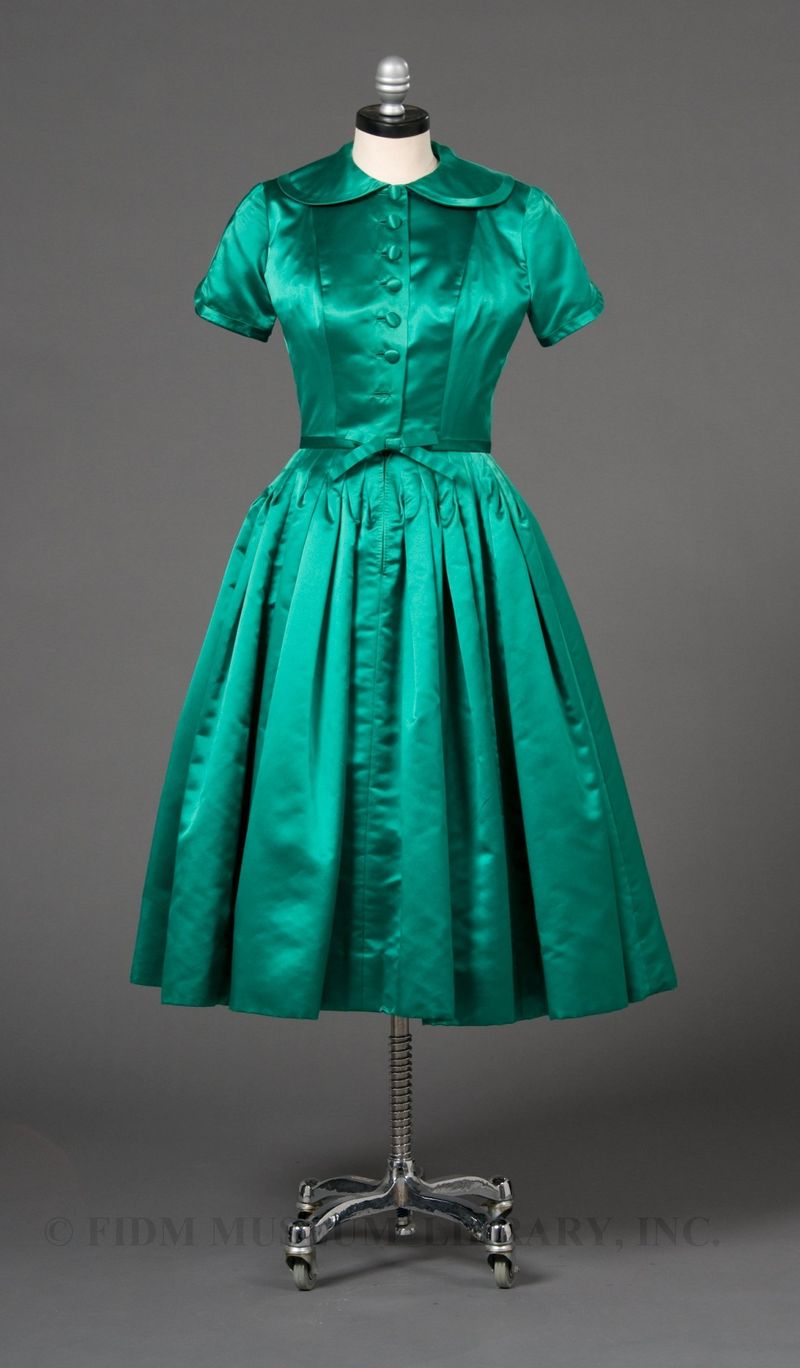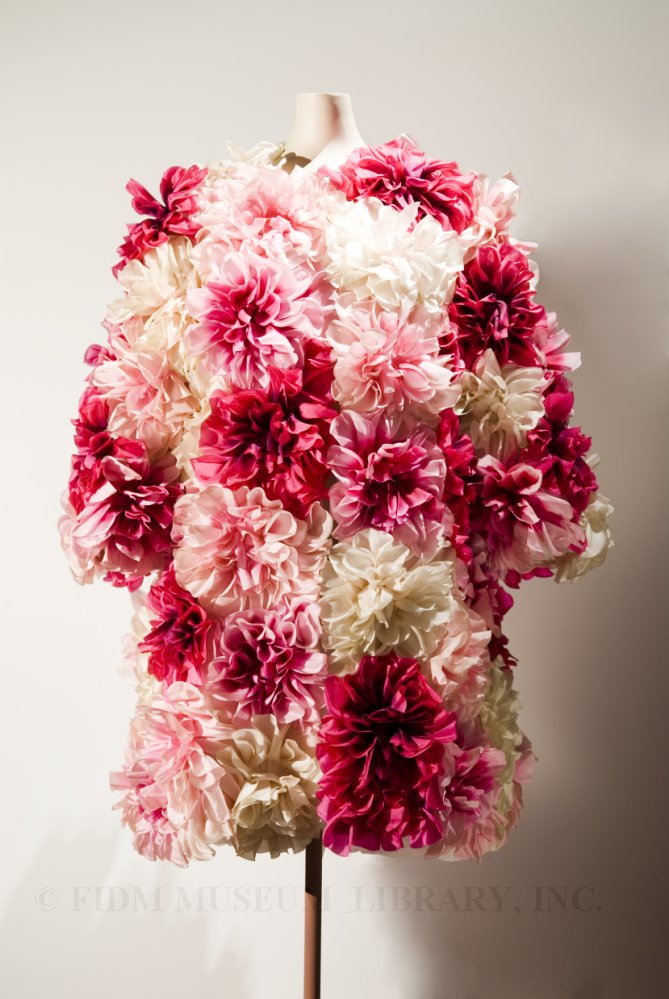This website uses cookies so that we can provide you with the best user experience possible. Cookie information is stored in your browser and performs functions such as recognising you when you return to our website and helping our team to understand which sections of the website you find most interesting and useful.
This bright blue bodice is a bit of a puzzle. Look closely at the image, and you'll probably notice something strange happening at the waist. Do you see the coarse cotton lining peeking out from below the blue silk waistband? The V-shape of the... Read Article ››
Dressing for a royal wedding
If you've been following media reports regarding the wedding of Kate Middleton and Prince William, this advice will sound familiar. For women attending a royal wedding, "hats are required, and there will be lots of big brims and fitted... Read Article ››
Lounge jacket, 1880s
Lounge or at-home jacket Silk with cotton embroidery 1880s Museum Purchase 2008.5.34 We are excited to announce that our 1880s embroidered silk lounge jacket will be featured in The Cult of Beauty: The Aesthetic Movement 1860-1900. Opening April 2 at... Read Article ››
Hermѐs
You've come a long way, Hermѐs. Founded in 1837 by Parisian harness and saddle maker Thierry Hermѐs, the House of Hermѐs is today a world-renowned purveyor of luxury goods. Building on the reputation of their highly regarded leather goods,... Read Article ››
Day ensemble, 1870-72
Day ensembleSilk taffeta 1870-72 Gift of Anne Stampfer 94.661.1A-D About 1868, the crinoline silhouette went out of style. The smooth, distinctly bell-like shape of the crinoline supported skirt began to change form, with the fullness moving towards... Read Article ››
Mariano Fortuny
Though Mariano Fortuny (1871-1949) is remembered primarily for his finely pleated silk gowns, it would be inaccurate to categorize his work as fashion, i.e. undergoing frequent stylistic changes. Unlike a couturier, who regularly introduces new silhouettes,... Read Article ››
Man’s dressing gown, 1905-1915
Throughout the 19th and into the first decade of the 20th century, mainstream formal and business dress for men was a black suit and light colored (often white) shirt paired with a black bow-tie. Constructed from durable wool and lacking all... Read Article ››
Mainbocher
Based on his experience as a Paris-based illustrator for Harper's Bazaar and editor of French Vogue, Chicago-born Main Rousseau Bocher (b. 1890) decided that he was entirely capable of opening his own couture house. He did so in 1930, first... Read Article ››
Nightgowns
In current usage, a nightgown is a women's or girls' garment worn specifically for sleeping. At different historical periods, the term nightgown referred to a loose gown worn by men, an evening dress worn by women and a day dress. Accordingly, it... Read Article ››
Silk moire bonnet, c. 1845
Bonnet c. 1845 2008.5.32 Museum Purchase During the 1840s, headcoverings were an essential part of every women's wardrobe. Inside the home, women often wore delicate, lacy caps which covered the hair and tied under the chin. When venturing out into the... Read Article ››
James Galanos cocktail dress, c. 1955
During the 1950s, French haute couture was a dominant force in fashion. Elite American women traveled to Paris and purchased their wardrobes directly from renowned couturiers, while many others experienced haute couture through mass-produced versions of the... Read Article ››
Norman Norell flower coat
"Flower power" is usually associated with the late 1960s hippie aesthetic, but flowers were actually a popular decorative motif throughout the decade. The early years of the 1960s witnessed a proliferation of stylized and patently artificial floral... Read Article ››

